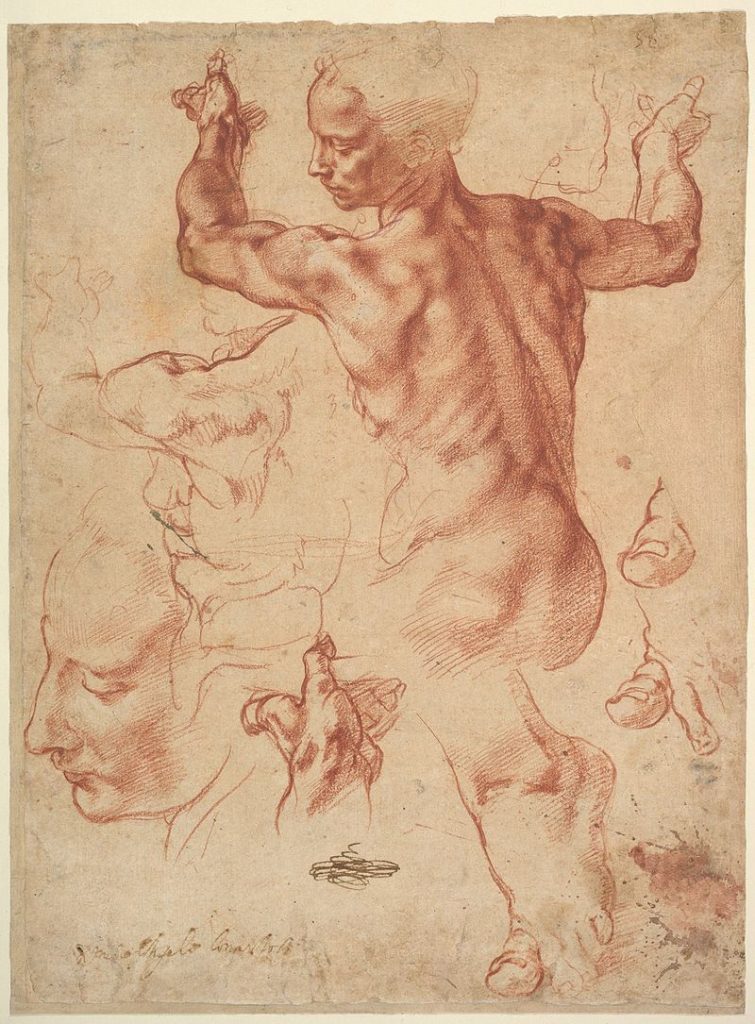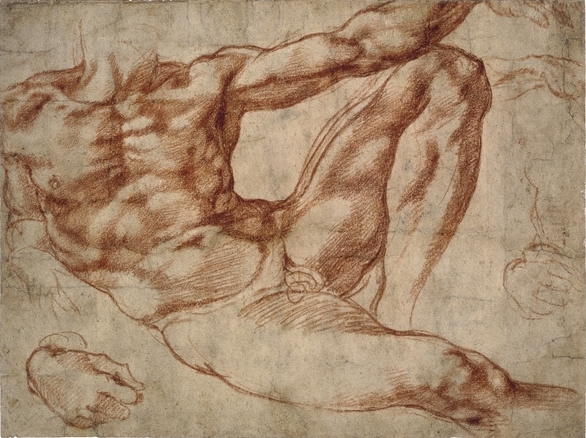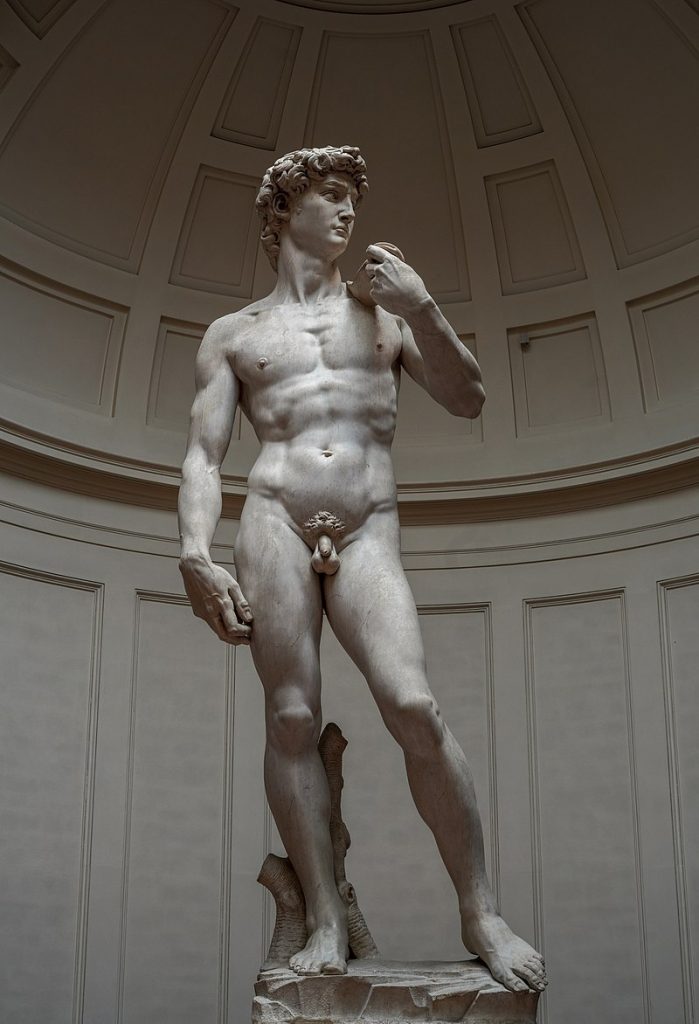
Studies for the Libyan Sibyl (recto); Studies for the Libyan Sibyl and a small Sketch for a Seated Figure (verso) is a 1511 drawing by Michelangelo. It is in the collection of the Metropolitan Museum of Art.
Michelangelo’s drawings of male and female forms are renowned for their exceptional beauty, anatomical accuracy, and expressive power. As one of the greatest artists of the Italian Renaissance, Michelangelo’s mastery of the human form is evident in his drawings, which served as studies and preparatory sketches for his sculptures and paintings.
When studying Michelangelo’s drawings of male figures, one cannot help but notice his meticulous attention to anatomical detail. He had a profound understanding of human musculature and skeletal structure, which he depicted with remarkable precision. His male figures exude strength, vitality, and idealized proportions. Michelangelo’s male nudes, such as those fou or “Studies for the Creation of Adam,” reveal his ability to capture the dynamic energy and grace of the human body. These drawings showcase his ability to convey movement, tension, and a sense of physical presence.

Michelangelo Buonarotti, Study for Adam, c. 1510-11, red chalk, 19.3 x 25.9 cm, Italy © Trustees of the British Museum.
In contrast, Michelangelo’s drawings of female figures possess a different sensibility. While his male figures emphasize muscularity and strength, his depictions of women display a softer and more delicate approach. The female forms in his drawings, such as those in “Studies for the Delphic Sibyl” or “Studies for the Libyan Sibyl,” exhibit elegance and sensuality. Michelangelo portrayed the female body with curves and flowing lines, emphasizing grace and beauty. Although he didn’t create as many female sculptures as male ones, his drawings of women demonstrate his ability to capture femininity and the subtleties of female anatomy.
One of the remarkable aspects of Michelangelo’s drawings is their expressive power. He not only focused on capturing the physical attributes of the human body but also sought to convey emotion and psychological depth. Through his skilled use of shading, contour lines, and hatching, he infused his drawings with a sense of drama and intensity. Whether it was the introspective gaze of a male figure or the tender expression of a female, Michelangelo’s drawings evoke a wide range of emotions and engage the viewer on a deeper level.

Statue of David, Michelangelo, 1501 – 1504, Florence, Marble , Galleria dell’Accademia di Firenze
Michelangelo’s drawings of both male and female forms were groundbreaking in their time and continue to inspire artists and art enthusiasts today. They serve as a testament to his extraordinary talent, mastery of anatomy, and ability to convey the complexity and beauty of the human body. Whether it was his male figures exhibiting strength and power or his female figures embodying grace and sensuality, Michelangelo’s drawings remain timeless examples of artistic excellence and continue to captivate audiences around the world.
Michelangelo’s personal life and sexual orientation have been the subject of speculation and debate among scholars, there is evidence to suggest that he had same-sex attractions.
Some of Michelangelo’s most celebrated works depict male figures, showcasing their beauty and physicality. One notable example is the statue of David, which is admired for its idealized male form. Additionally, Michelangelo’s poetry includes love sonnets addressed to men, such as Tommaso dei Cavalieri, expressing deep affection and desire.
It’s important to remember that the concept of sexual orientation as we understand it today did not exist in the same way during Michelangelo’s time. Renaissance society held complex and nuanced attitudes toward same-sex relationships, and the understanding of homosexuality was different from contemporary perspectives. Relationships between men, even those with strong emotional or intimate elements, were not necessarily interpreted solely through a sexual lens.
While there is evidence to suggest Michelangelo had same-sex attractions, it is crucial to approach historical figures with sensitivity and avoid imposing modern labels or understandings onto their experiences. Ultimately, Michelangelo’s sexual orientation remains a topic of interpretation and speculation, and definitive conclusions are challenging to reach due to limited historical records and the cultural context of his era.
